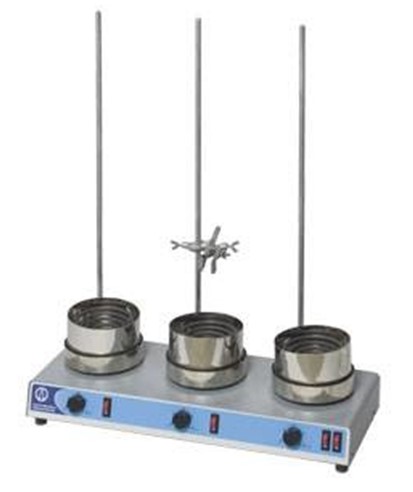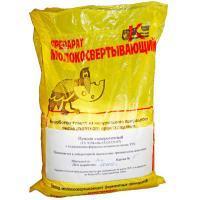Four regions of Russia have vaccinated more than 20% of the population
Since the last RBC count, which was conducted in mid-May, the number of Russians who received at least one dose of the vaccine has grown from 13.9 million (9.5% of the total population) to 19.9 million (13.6%). RBC requested information about the course of the campaign from the regional authorities and studied publications on the official websites of the governments and operational headquarters of the subjects of the federation.
Over the past month, authorities have repeatedly expressed dissatisfaction with the pace of vaccination in the country. The fact that they leave much to be desired was also stated in the Kremlin. Against the background of a new wave of infections, the regions began to make tough decisions to stimulate the vaccination campaign, moving from lotteries and gifts for vaccination to mandatory requirements and bans for those who do not have immunity to CORONAVIRUS.
Beer and chickens. How the world encourages people to get vaccinated against covid. Photo gallery Photo gallery
Which regions are the most behind in the first dose of the vaccine
As of June 21-24, the top ten in terms of the proportion of the population who received at least one dose remained almost unchanged. Top newcomers - Yakutia, Tyumen region and Khanty-Mansi Autonomous Okrug:
1. Chukotka - 30.1%
2. Belgorod region - 26%
3. NAO - 22.5%
4. Mordovia - 20.5%
5. Sakhalin - 19.9%
6. Yakutia - 19.5%
7. Magadan region - 19.5%
8. Tyumen region - 18.4%
9. Tuva - 18%
10. KhMAO - 18%
At the same time, even in the Nenets Autonomous Okrug and Chukotka, they are dissatisfied with the pace of vaccination. The press service of the administration of the NAO RBC stated that the population "is not very active in getting vaccinated, there are many anti-vaccinators." In Chukotka, a decrease in the rate of vaccination by more than two times was noted. They believe that additional measures are needed to stimulate citizens, since the problem is not the lack of a vaccine - it is available in all settlements. “On the one hand, this can be attributed to the fact that everyone who wants to be vaccinated has already been vaccinated. The rest can be divided into 2 categories - anti-vaxxers and hesitant. There are many times fewer anti-vaxxers than those who hesitate, but they have a decisive influence on the latter, ”the information policy department of the region told RBC.
The outsiders are still the republics of the North Caucasus: Dagestan (4.1%, last time it was 2.5%), Kabardino-Balkaria (6.2%, it was 3.5%) and North Ossetia (7.5%, at the last count, it was not included in the top three, gaining 5.5%).
Chechnya, which was in the top three outsiders in May, has even broken out of the last twenty: now it is in 63rd place out of 85. The share of those who received one dose of the vaccine from the entire population there has increased from 4.3% to 11.7%. According to the authorities of the region, 21% of the planned number of people have been vaccinated. True, recently the HEAD of the republic, Ramzan Kadyrov, complained to the president about the lack of vaccine and queues at some vaccination points and asked the federal center to pay attention to this.
Similar problems were reported in Bashkiria, one of the regions that recently introduced bans for the unvaccinated (among other things, visiting catering establishments, museums and cinema). In the Sverdlovsk region, only 20,000 doses of vaccines remain, and in the regional center of Yekaterinburg, the drugs have completely run out: all the remaining doses are distributed among those who signed up for the vaccine a long time ago. On June 24, the region received another 36,000 doses. Governor Yevgeny Kuyvashev vowed not to introduce mandatory vaccinations until there are sufficient numbers in the region and asked employers to hold off on incentivizing employees.
What and in which regions is now impossible without a certificate of vaccination Society
Presidential spokesman Dmitry Peskov explained the shortage of drugs with logistical difficulties and an increase in the rate of vaccination. In some regions, there is indeed an increased interest in the vaccine - for example, in the Amur Region and the Stavropol Territory. The increase in demand for vaccinations in the last two weeks was also reported to RBC in the Vologda Oblast.
In the Rostov region they are talking about other problems. On June 22, Governor Vasily Golubev demanded that slow-moving municipalities streamline the organization of the process: “Make it so that people come for vaccination at a convenient time for them. Do not wait for headquarters meetings – organize the work in your territories with high quality and thoughtfulness. A poorly organized process is one of the main reasons for the low vaccination rate.”
Share of fully vaccinated
The leaders in terms of the proportion of the population who completed the full course of vaccination are almost the same as in the case of the first dose. Chukotka (25.7%), Nenets Autonomous Okrug and Belgorod Region (19.1% each) are ahead, indicators in other regions of the top ten range from 13.9% (KhMAO) to 17.1% (Mordovia). In 27 regions, even 10% of the total population did not accumulate. In total, according to RBC estimates, at least 12.9 million Russians received the second dose. In reality, this number is much higher, since in some regions there is no up-to-date information about those who received the second dose of the vaccine - Moscow is still among them.
Moscow: Incidence Records and Vaccination Promotion
In the capital, which leads the country in new cases of infections and, according to the authorities, has already reached peaks for the entire pandemic, mandatory vaccination was introduced for certain categories of workers before anyone else. By July 15, at least 60% of employees in catering, trade and services, education, healthcare and other industries should receive the first dose. They must be fully immunized by August 15th. Moscow also decided to introduce a system of QR codes, without them it will now be impossible, for example, to eat in a cafe - or you will have to present a clean PCR test made no earlier than three days ago.
Which of the workers were obliged to vaccinate in Moscow and the region. Infographic Society
Earlier, Sobyanin was outraged by the pace of vaccination in the capital. “The percentage of those vaccinated in Moscow is less than in any European city, and for some at times ... We continue to get sick, people continue to die, and at the same time they do not want to be vaccinated,” he said on May 21.
On February 20, the capital, according to RBC estimates, was among the top three in terms of the proportion of the entire population who received the first dose of the vaccine - then it was 4.7% (Sakhalin was in first place with 5.1%, Magadan Region was in third with 4.2 %). Then the situation changed, and the advantage gained by Moscow due to the early start (the campaign in Moscow began in December, while in all of Russia - in January. - RBC) was lost. On June 22, the head of the Department of HEALTH, Alexei Khripun, said that more than 2 million people had been vaccinated in Moscow. Based on these data, Moscow is now in 17th place, with at least one dose of the vaccine in the city received by 15.8% of all residents.
On June 23, Sergei Sobyanin said that the number of people wishing to be vaccinated had grown 10 times: “Yesterday, a record number of about 60,000 registered, and more recently we “fell” to a level of about 6,000 (entries) per day.” The city is increasing the number of vaccination points and extending their hours of operation.
Measures similar to those in the capital were introduced in the Moscow region. Against this background, over the past week, the number of people who signed up for vaccination has increased five times.
Now the inhabitants of Russia are vaccinated with three vaccines. The most massive is Sputnik V of the Gamaleya Center. There is also EpiVakKorona of the Vector Center and KoviVak of the Chumakov Center. On June 22, Moscow announced that the CoviVac drug had run out, the registration for vaccination had been suspended, and the city was waiting for a new supply. The same was stated by RBC in the Tambov region.
In order to accelerate the pace of the vaccination campaign, a number of regions have introduced mandatory vaccination of certain groups of citizens. Moscow and the Moscow region were the first to announce this. After that, it became known that the Metropolitan Police opened more than 20 criminal cases for the manufacture and sale of false certificates.
Recently, reports have begun to appear about citizens who have been vaccinated with coronavirus and have been vaccinated. Virologists explained that the likelihood of infection depends on the individual immune response, but the disease in vaccinated infected should proceed in a weakened form.
Which regions have declared mandatory vaccination against coronavirus. Map Society



























































